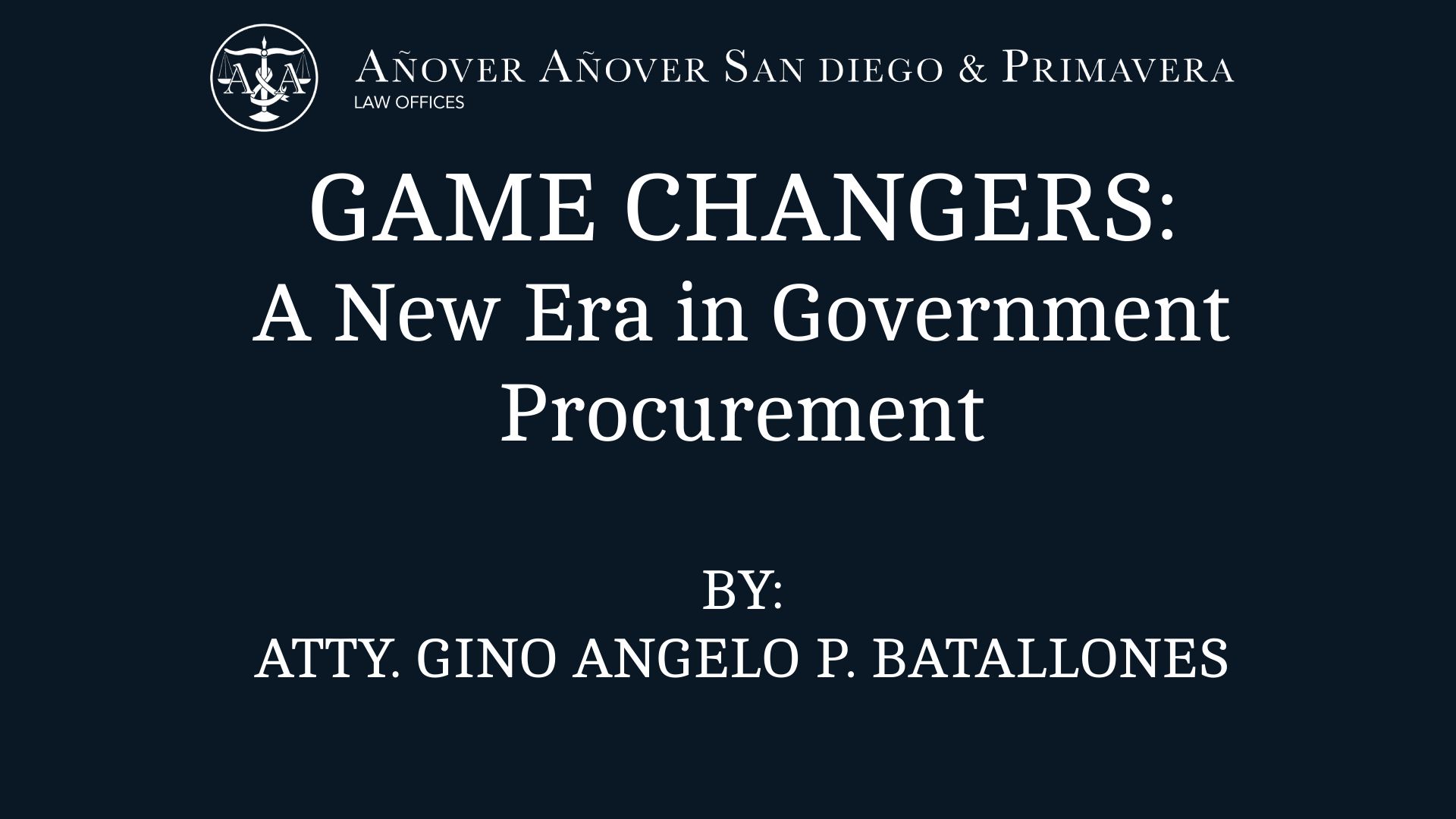Public bidding or government procurement traces its roots from Act No. 22 which was enacted during the American era. A century later, R.A. 9184 (Government Procurement Reform Act or GPRA) was passed, guided by the principles of transparency, competitiveness, streamlined processes, accountability, and public monitoring.
After a 21-year wait or in July 2024, R.A. 12009 or the New Government Procurement Act (NGPA) was finally enacted to replace the seemingly outdated GPRA. Aimed to further enhance the GPRA principles, it also supplements the same with the addition of the principles of proportionality, participatory procurement, sustainability, and professionalism. These principles so espoused draw closer to full realization when the IRR of the NGPA was finally approved on 4 February 2025.
The NGPA is seen to be a revolutionary piece of legislation as it keeps up with the changing times. For one, while procurement by electronic means was recognized in the GPRA through the Philippine Government Electronic Procurement System (PhilGEPS) as an information source for government procurement, the NGPA further modernizes the use of the PhilGEPS by designating it as the sole or single portal not only to serve as the primary source of information, but also as a channel in the conduct of all procurement activities of the government. The law and its IRR further promote modernization by the use of technology in other areas such as procurement data analytics, procurement planning as well as payment of contracts.
Another innovative aspect of the NGPA and its IRR is the pivot from competitive bidding as the main mode of government procurement to a more dynamic procurement framework consistent with the “fit-for-purpose procurement approach.” This means that procuring entities are given more freedom, subject to certain conditions, to immediately choose methods of procurement other than competitive bidding, ranging from limited source bidding, direct contracting, negotiated procurement and small value procurement, among others. The law likewise introduced new modes of procurement not found in the GPRA such as competitive dialogue, unsolicited offer with bid matching, and direct sales. These significant changes appear to align with the government’s thrust to deliver goods and services to the public in a more responsive, efficient, and flexible manner.
The NGPA and its IRR also promotes the concept of “sustainable public procurement” such as encouraging procuring entities to seek to procure goods and infrastructure with reduced environmental impact, if applicable, and inclusivity in programs involving gender and ethnic equity such as in procurement of services.
In terms of furthering transparency accountability, the new law and the IRR mandates the use of video recordings for procurement related conferences and the disclosure of beneficial ownerships for juridical entities who participate, among others.
Perhaps to the author’s mind, one of the most imaginative breakthroughs or developments under the NGPA is the institution of professionalization in government procurement. While the concept of professionalization is provided in the old GPRA, the NGPA and its IRR now provides a more detailed framework. With this, the Department of Budget and Management, the primary agency in charge or government procurement, is now mandated to create procurement positions in the government based on the qualification standards recommended by the Government Procurement Policy Board and approved by the Civil Service Commission. With the help of the Professional Regulation Commission, this professionalization includes the development of a code of ethics for procurement professionals, and the establishment, administration, and regulation of a professional licensing program and the continuing education of public procurement professionals as a requirement for holding a procurement position in government.
There is no question that the intentions of the NGPA (and even the GPRA) are genuine and good. While history has been a witness to many controversies involving government procurement, all we can do for now is wait, hope and see whether this new legislation further safeguards the tenets of good governance. After all, government procurement is only a means to an end; that is to give maximum benefits to the people in terms of the services and goods provided by the government. Just like in any law, it does not stop with enactment but should follow through in the sustainably of its implementation.
The author is a Partner in the Firm. He specializes in Corporate Law, Government Contracts, Mergers & Acquisitions, and Employment and Labor Law. He may be contacted at gab@anoverlaw.org.
Disclaimer: This article is for informational purposes only and is not intended to be considered as legal advice nor create an attorney-client relationship.

